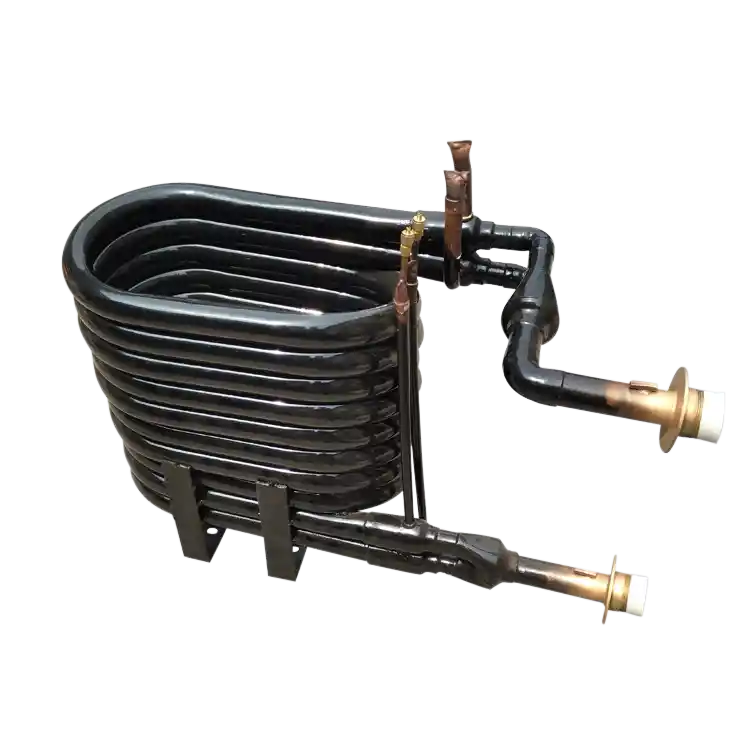1. Introduction
The pressure flow rate analysis is an essential quality control measure in the production process of coaxial heat exchangers. It involves evaluating the relationship between pressure and flow rate to ensure optimal performance and adherence to design specifications. In this article, we will explore the significance of pressure flow rate analysis, testing methods, and the interpretation of analysis results in the context of coaxial heat exchangers.
2. Importance of Pressure Flow Rate Analysis
Pressure flow rate analysis is crucial for the following reasons:
2.1 Performance Validation
By analyzing the pressure-flow rate relationship, manufacturers can validate whether the coaxial heat exchanger operates within the specified performance parameters. This analysis ensures that the heat exchanger delivers the required flow rates at the designated pressure levels.
2.2 System Efficiency Optimization
Understanding the pressure-flow rate characteristics helps optimize the system efficiency of the coaxial heat exchanger. By identifying the pressure points that yield the desired flow rates, manufacturers can optimize the design and operation of the heat exchanger for improved efficiency.
2.3 Equipment Protection
Pressure flow rate analysis enables manufacturers to identify any abnormalities or deviations that may indicate system malfunctions. By monitoring the pressure-flow rate relationship, manufacturers can detect potential issues and take corrective measures to protect the heat exchanger and associated equipment.
3. Testing Methods for Pressure Flow Rate Analysis
Various methods can be employed to analyze the pressure-flow rate relationship in coaxial heat exchangers:
3.1 Experimental Flow Rate Measurement
Experimental flow rate measurement involves conducting controlled tests to determine the flow rate at different pressure levels. This method provides direct data on the pressure-flow rate relationship and helps validate the heat exchanger’s performance.
3.2 Pressure Drop Calculation
Pressure drop calculations can be performed using theoretical models or empirical correlations based on the heat exchanger’s design and operating conditions. These calculations estimate the pressure drop across the heat exchanger and its impact on the flow rate.
3.3 Computational Fluid Dynamics (CFD) Simulation
CFD simulation utilizes computational models to simulate the fluid flow and pressure characteristics within the coaxial heat exchanger. By analyzing the CFD results, manufacturers can assess the pressure-flow rate relationship and identify areas for improvement.
4. Interpreting Analysis Results
Interpreting the results of pressure flow rate analysis involves considering the following factors:
4.1 Flow Rate Variation with Pressure
Analyzing the relationship between flow rate and pressure helps identify any deviations from the expected behavior. Manufacturers can assess the linearity or non-linearity of the pressure-flow rate relationship and ensure it aligns with design specifications.
4.2 Pressure Loss Evaluation
Evaluating the pressure loss across the heat exchanger provides insights into its hydraulic performance. Manufacturers can assess the pressure drop at different flow rates and identify any excessive pressure losses that may impact system efficiency.
4.3 Compliance with Performance Standards
Comparing the analysis results with the specified performance standards allows manufacturers to determine if the coaxial heat exchanger meets the desired requirements. Any deviations or discrepancies can be addressed to ensure compliance and optimal performance.
5. Conclusion
Pressure flow rate analysis is a critical component of quality control in the production of coaxial heat exchangers. By analyzing the pressure-flow rate relationship, manufacturers can validate performance, optimize system efficiency, and protect equipment. Accurate interpretation of analysis results enables manufacturers to make informed decisions and continually improve the design and operation of coaxial heat exchangers.


